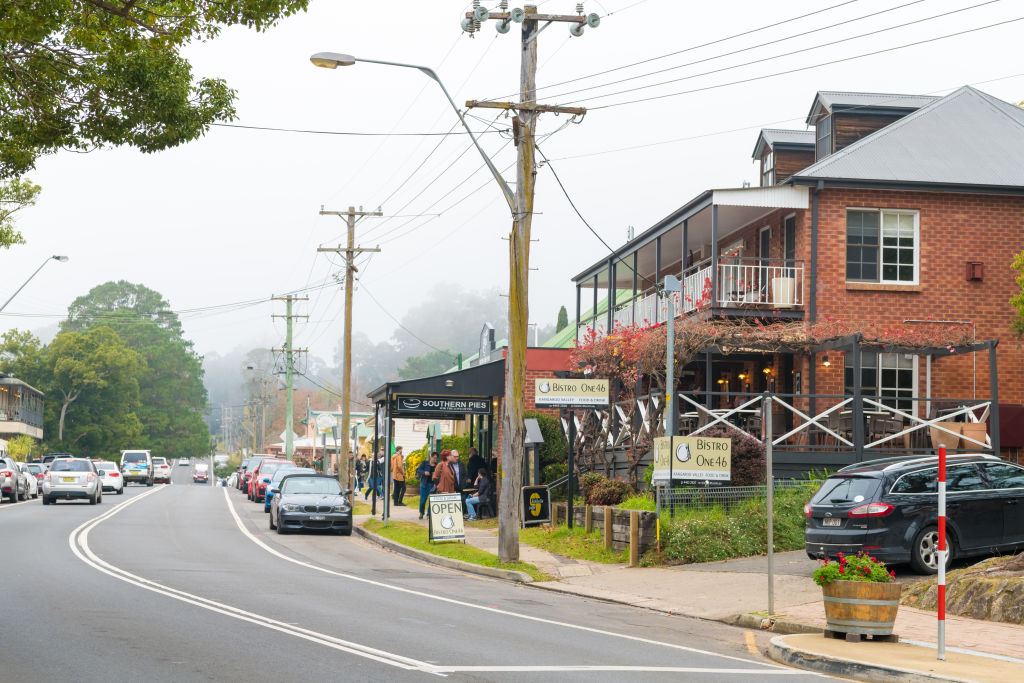The Sunshine Coast has surged ahead as Australia’s most coveted region for movers, capturing a record share of net internal migration over the last year according to the latest Regional Movers Index (RMI), but regional Western Australia’s also gaining popularity, particularly with metro movers.
The RMI is a partnership between Commonwealth Bank of Australia (CBA) and the Regional Australia Institute (RAI), which analyses the quarterly and annual trends in people moving to and from Australia’s regional areas.
Data from the just-released December 2023 quarter RMI shows the regional net internal migration index increased by 4.6% over the last three months – it’s highest level since the September 2022 quarter and 13.8% above the pre-COVID average.
This index measures the number of people moving into the regions, relative to the number of people moving back to our capital cities.
RAI CEO Liz Ritchie said the lure of regional living remains strong, with 24.9% more people moving from the city to the regions, than back in the opposite direction.
“Regional Australia offers something more for many people, especially those from big cities. More space, more time, more affordability. This shift, away from capital city living, has been underway now for a decade. It was definitely super-charged by COVID, but this data proves the regions are still very desirable for a significant proportion of the population,” Ms Ritchie said.
Sydney was again the capital that shed the most people in the last 12 months, accounting for 65% of all capital city outflows, followed by Melbourne at 35%.
Regional New South Wales also accounted for the largest share of net inflows from capitals, capturing 36% of all city dwellers leaving the big smoke, followed by regional Queensland at 32% and regional Victoria at 30%.
The Sunshine Coast (QLD), Gold Coast (QLD), Greater Geelong (VIC), Moorabool (VIC) and Fraser Coast (QLD) all made return appearances in the RMI’s regional hotspot list, by share of net internal migration.
However, the Sunshine Coast now commands an impressive lead, accounting for a 17.5% share of all net internal migration, up from 12.5% a year ago, and eclipsing the next most attractive region, the Gold Coast, with an 8.1% share.
Commonwealth Bank Executive General Manager Regional and Agribusiness Banking Paul Fowler said the Sunshine Coast offered a wonderful lifestyle experience and is one of Queensland’s fastest-growing economies, so it was no surprise it had retained its coveted number one spot for the fifth quarter in a row.
“A skilled and diverse labour supply is one of the most critical inputs for any economy and Sunshine Coast businesses across a wide range of sectors are taking advantage of the growth in people coming to the area, moving at pace to explore new and innovative opportunities,” Mr Fowler said.
“The tug of regional New South Wales remains strong with communities relatively close to Sydney, such as Lake Macquarie, Cessnock, and Maitland, making various hotspot lists.
“It’s always a highlight for me to spend time in region with our customers and last month I was delighted to spend a few days in Newcastle, Maitland and the Central Coast of NSW. From the sunny beaches to the picturesque wineries, the Central Coast and Hunter region is a beautiful part of the world that contributes greatly to the Australian economy.
“With a strong local economy and significant activities being undertaken to diversify across sectors like infrastructure, defence, healthcare and manufacturing, we are really excited for the opportunities we have in the region, and to support more businesses in regional Australia.”
Mr Fowler said when it comes to growth hotspots, Western Australia continues to grow.
“WA’s economy is strengthening beyond traditional resources, with wholesale trade, construction, professional services and agribusiness coming to the fore,” Mr Fowler said.
Ms Ritchie added Western Australia was a standout performer in two key measures – taking out three of the top-five spots for annual growth in both total net internal migration and net capital-to-regional migration.
“In the last 12 months the Shire of Boddington has seen a 219% increase in net internal migration – with more than 70% of the movers made up of Millennials and Gen Xers and almost all of those relocating to the area from Perth. Meanwhile in Northam there has been an almost 93% increase in net capital to regional migration. Metro movers have developed a definite sweet spot for regions in the west,” Ms Ritchie said.
After historically high levels of movement across Australia in the last year, this quarter saw the number of people both regionally and city-based relocating, drop. This is attributed to the typical seasonal trend of reduced mobility in the last three months of the year; and the uncertainty that 2023 delivered through repeated interest rate rises, and high property prices.
Despite this, capital to regional migration remains 2.1% above the pre-COVID average.
Access the latest Regional Movers Index December 2023 quarter.
Media enquiries
Melinda Hayter – Regional Australia Institute
P: 0498 373 300
E: [email protected]
Commonwealth Bank
P. 02 9118 6919
E: [email protected]
Editor’s Note: The Regional Movers Index, launched in 2021, tracks movements between Australia’s regions and capital cities, using Commonwealth Bank data from relocations amongst more than 16 million customers. This enables early identification of growth trends and flags places emerging as hot spots needing fresh thinking on housing and infrastructure.
Data based on CBA customer address changes over the past five years, with prior addresses resided in for at least six months. Greater Capital City/Regional Area based on ABS 1270.0.55.001 GCCSA. At least 50 persons must have migrated to an LGA from a capital city in the previous 12 months for an LGA to be include in the report.
The RMI is used primarily to map population movements between Australia’s regional areas and its capital cities. For this reason, it uses an ABS classification of regional that includes areas in and around other centres of population, including the Gold Coast, Sunshine Coast, Newcastle, Wollongong and Geelong.


